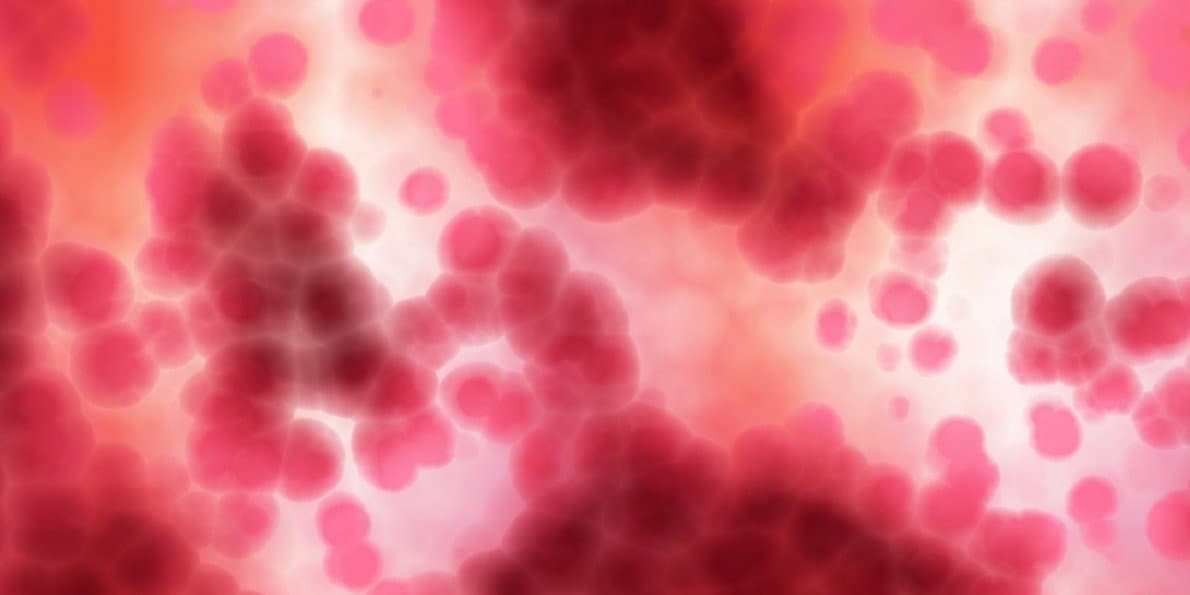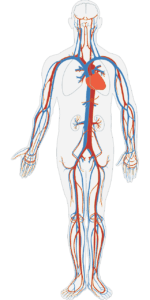
Most of us rarely think about our body’s blood circulation. Like breathing, it’s something that happens subconsciously and usually runs perfectly without us paying any attention – until we start to notice some out-of-the-ordinary symptoms, that is.
Do you find your hands and feet getting chilly, even during summer when it’s hot outside? Perhaps you’re constantly exhausted, have started to see swelling in your lower legs or have a wound that just won’t heal. If any of these apply to you, or you’re worried for another reason, read on to learn 15 symptoms that may mean you have blood circulation problems.
What is Blood Circulation?
 Your blood is a transport system that sends blood, oxygen and nutrients to every part of your body. Your heart is the engine, pumping more than five liters of blood from head to toe – without ever taking a break.
Your blood is a transport system that sends blood, oxygen and nutrients to every part of your body. Your heart is the engine, pumping more than five liters of blood from head to toe – without ever taking a break.
Blood travels through your body in vessels – arteries lead to the peripheries and veins are the highways back to your heart. When a problem arises in any one of these blood vessels, the connected body part will experience reduced blood flow and you’ll start to notice symptoms of poor circulation. (source)
The video explores the Heart – The Circulatory System
Causes of Poor Blood Circulation

Poor circulation can affect anyone, however it’s most common in older people. It isn’t a condition in itself, rather it’s a result of other health issues. If left untreated it has serious consequences – damaging your brain, heart, liver, kidney and limbs.
Several conditions can cause poor circulation including:
- Obesity
- Diabetes
- Heart conditions and arterial issues
- Smoking
- Pregnancy
- Improper diet
- Lack of regular exercise
- Sitting or standing in one place for a long time
- Peripheral Artery Disease (vessels blocked by cholesterol/“plaque”)
- Blood Clots
- Varicose Veins
- Raynaud’s Disease (disease of small vessels in fingers and toes)
Symptoms of Blood Circulation Problems
1. Cold Hands & Feet
Blood carries heat from your core to the rest of your body. Since your hands and feet are the furthest away from your heart, it makes sense that reduced flow will leave you with icy extremities, even when you’re in a warm room.
2. Swelling in the Lower Limbs
When blood moves more slowly through your vessels, pressure starts to build up inside. To relieve this, your body allows some fluid to leak into the surrounding tissue – causing swelling, usually in the legs, hands or feet.
3. Discolored Skin
Blood that’s full of oxygen is bright red. If your blood is lacking, it can turn more of a blueish hue. This will show up as a blue tint in your fingers and toes, or bruised appearance if you have poor circulation.
4. Varicose Veins
If you have blockages or reduced blood flow in your legs (e.g. working at a job where you stand all day causes blood to pool in your legs), you will most likely start to develop varicose veins.
Blood builds up in the vessels causing increased pressure and eventually twisting and swelling the vessels. Varicose veins are often itchy and can be painful. Your doctor or pharmacist can recommend products to prevent worsening of varicose veins, such as compression stockings.
5. Leg Ulcers
Ulcers are painful, red, inflamed areas of skin that may appear like a persistent, indented rash. In cases of poor circulation, ulcers will start to develop on the lower legs near the feet.
6. Slow or Non-Healing Wounds
As well as oxygen and nutrients, your blood carries immune cells to wherever they’re needed. Decreased blood supply means slower healing, especially in your extremities.
7. Lack of Energy
When your body isn’t getting enough oxygen from your blood, it goes into conservation mode. This means it saves up energy as much as possible, leaving you feeling drained and sluggish, even when you’ve just gotten out of bed.
8. Poor Memory & Cognitive Function
If you haven’t been thinking clearly or find yourself becoming more forgetful, reduced blood supply to the brain may be the culprit. Poor blood flow slows everything down, including your cognitive function.
9. Numbness or Tingling in the Extremities
If you find your arms or legs “falling asleep” more than usual, this is a sign of poor blood circulation. It’s normal sometimes, for example, if you cross your legs for a long period of time – the weight of your upper leg is squashing the blood vessels in your lower leg, much like stepping on a garden hose, meaning blood cannot pass.
However, if you have this symptom without an obvious cause, check it out with your doctor.
10. Limb Pain
A throbbing or stinging pain in the limbs or muscle cramps upon exercising can be a signifier for blood circulation problems. Reduced blood flow means not enough nutrients to fuel your workout.
11. Dizzy Spells
Dizziness is usually caused by reduced blood flow to the brain. Lightheadedness upon standing up in particular is associated with low blood pressure.
12. Headaches
Some types of headache and migraine are caused by changes in your blood vessels and blood flow to the brain. If you suddenly start getting headaches, ask your doctor if blood circulation may be an issue.
13. Erectile Dysfunction/Decreased Libido
Poor blood flow doesn’t just mean lack of blood supply to your hands and legs – it also affects your reproductive organs. Low blood flow in this area results in erectile dysfunction in men and lack of libido in all genders.
14. Chest Pain
Angina is a tightness or squeezing pain in the chest, usually upon exertion. This is a very serious symptom of poor blood circulation – indicating there’s a lack of blood supply to your heart. If you think you’re suffering from angina, see a doctor asap. There are many successful treatments which can improve the situation.
15. Digestive Issues
Reduced blood flow can affect your whole body – including your digestive system. You may find your bowels moving more slowly, leading to constipation.
Where to go From Here?
There are many ways to improve your blood circulation – giving up smoking, staying active and losing weight to name but a few. However, the first port of call is your doctor. Poor blood circulation can be a sign of some life-threatening conditions, your doctor will be able to identify the underlying issue and treat it accordingly. (source)
Conclusion
I hope this article has been informative and helped you identify some symptoms that mean you may have blood circulation problems. It’s always a good idea to get any symptoms checked out as soon as possible. Most likely it’s nothing serious but in rare cases it can be a sign of something potentially fatal so it’s better to be safe than sorry.
Leave a comment